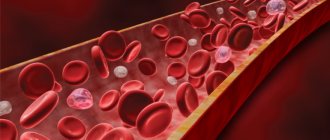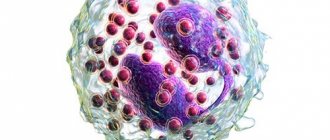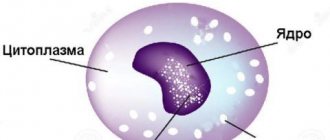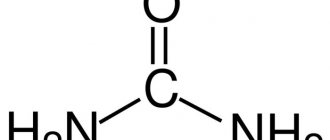Regulation of calcium metabolism
Calcium and phosphate (PO) metabolism are interrelated.
Regulation of calcium and phosphate balance is determined by circulating levels of parathyroid hormone (PTH), vitamin D and, to a lesser extent, calcitonin. The concentrations of calcium and inorganic PO are related to their ability to participate in a chemical reaction to form CaPO. The calcium and PO concentration product (in mEq/L) is normally 60; when the product exceeds 70, precipitation of CaPO crystals in soft tissues is likely. Precipitation in vascular tissue contributes to the development of arteriosclerosis. PTH is produced by the parathyroid glands. It has various functions, but probably the most important is the prevention of hypocalcemia. Parathyroid cells respond to a decrease in plasma calcium concentration, and in response to it, PTH is released into the circulation. PTH increases plasma calcium concentrations within minutes by increasing renal and intestinal calcium absorption and by mobilizing calcium and PO from bone (bone resorption). Renal calcium excretion is generally similar to sodium excretion and is regulated by essentially the same factors that control sodium transport in the proximal tubule. However, PTH increases calcium reabsorption in the distal nephron independently of sodium. PTH also reduces renal PO reabsorption and thus increases renal PO loss. Renal PO loss prevents increases in plasma Ca-binding product and PO as calcium levels rise in response to PTH.
PTH also increases plasma calcium levels by converting vitamin D to its most active form (1,25-dihydroxycholecalciferol). This form of vitamin D increases the percentage of calcium absorbed in the intestines. Despite increased calcium absorption, increased PTH secretion usually leads to further bone resorption by suppressing osteoblastic function and stimulating osteoclast activity. PTH and vitamin D are important regulators of bone growth and remodeling.
Studies of parathyroid function include determination of circulating PTH levels by radioimmunoassay and measurement of total or nephrogenic urinary cAMP excretion. Urinary cAMP testing is rare, but accurate PTH testing is common. The best tests are for intact PTH molecules.
Calcitonin is secreted by parafollicular cells of the thyroid gland (Cells). Calcitonin reduces plasma calcium concentrations by increasing cellular calcium uptake, renal excretion, and bone formation. The effects of calcitonin on bone metabolism are much weaker than the effects of PTH or vitamin D.
It's no secret that vitamins, minerals and trace elements, including ionized calcium, play an important role in the functioning of the human body. There are two fractions of calcium in the blood: free and one that is combined with other substances, for example, plasma proteins and phosphates. Normally, the amount of free calcium should not exceed approximately 45% of the total level of this mineral. Almost all deviations from normal indicators can be considered pathologies.
Ca is outside the norm
Indications above normal indicate the following pathologies:
- malignant neoplasms;
- leukemia;
- acute renal failure;
- excess vitamin D;
- various forms of hypercalcemia, including physiological in infants and hereditary;
- pathologies of organs involved in the regulation of hormonal levels: thyroid gland, pituitary gland, adrenal glands;
- sarcoidosis
Pathologies such as:
- acute pancreatitis;
- liver dysfunction;
- improper kidney function;
- vitamin D deficiency;
- hypoparathyroidism.
In any deviation from the norm, in explaining the reasons for a decrease or increase in content, a number of factors are involved.
Norms and interpretation of the result of a blood test for calcium
Blood tests for calcium levels are now offered by many private laboratories. The test must be taken in the morning on an empty stomach. Venous blood is collected for testing.
The normal level of total calcium in the blood in adults is 2.15-2.5 mmol/l. In children, this figure is slightly higher and amounts to 2.2-2.7 mmol/l.
When is calcium low?
A decrease in total calcium is indicated when its level is less than 2 mmol/l (hypocalcemia). The main cause of this condition is hypoparathyroidism. When the parathyroid glands are diseased, the production of parathyroid hormone decreases, and therefore the level of calcium is steadily reduced.
Hypoparathyroidism can be primary or secondary. Primary hypoparathyroidism is a manifestation of a congenital pathology, for example, DiGeorge syndrome. Much more often, doctors encounter secondary hypoparathyroidism. This includes postoperative hypoparathyroidism, which develops after removal of the thyroid gland. The development of secondary hypoparathyroidism against the background of autoimmune diseases is also common.
Calcium is also reduced in the following pathological conditions:
- Hypovitaminosis D;
- Hypomagnesemia;
- Chronic renal failure;
- Pancreatic necrosis;
- Gastrointestinal diseases accompanied by malabsorption.
When is calcium high?
When calcium exceeds 2.5 mmol/l, then doctors talk about increased calcium levels (hypercalcemia). There are two main reasons for its increase - hyperparathyroidism and malignant neoplasms.
With hyperparathyroidism, the parathyroid glands produce a lot of parathyroid hormone. And an increase in this hormone causes a persistent increase in calcium in the blood. Hyperparathyroidism often develops as a result of damage to the gland by a benign tumor.
Oncological diseases of various localizations can be accompanied by an increase in calcium in the blood due to bone destruction by metastases. In addition, some malignant tumors are capable of secreting a substance that has an effect similar to parathyroid hormone.
Pathological conditions such as:
- Thyrotoxicosis;
- Sarcoidosis;
- Excess vitamin D;
- Hemoblastoses;
- Addison's disease;
- Paget's disease.
Valeria Grigorova, doctor, medical columnist
3, total, today
Decoding
The analysis and interpretation of the indicators obtained as part of the studies carried out is carried out only by a doctor. First of all, the relationship of the obtained results to normal values is considered:
| Age | Biochemical analysis | Analysis for free element content |
| Newborns | 1.9 – 2.6 | 1 – 1.3 |
| 2 – 24 months | 2.25 – 2.75 | 1.1 – 1.37 |
| 2 years – 12 years | 2.2 – 2.7 | 1.1 – 1.31 |
| >12 years old, boys | 2.1 – 2.55 | 1.05 – 1.26 |
| >12 years old, girls | 2.2 – 2.5 | 1.1 – 1.25 |
Causes and symptoms of hypercalcemia
Hypercalcemia develops in humans for two reasons:
- hyperparathyroidism (enlargement of the parathyroid glands caused by benign tumors);
- malignant tumor formations (they affect bone tissue and promote the release of calcium into the bloodstream).
It is worth highlighting less common, but relevant reasons for the increase in the concentration of calcium (ionized and total) in the blood:
- hypothyroidism (reduced activity of the parathyroid glands);
- tuberculosis;
- sarcoidosis (an inflammatory disease affecting the lungs);
- sedentary lifestyle and long-term immobility;
- excess vitamin D in the body;
- blood diseases (myeloma, leukocytosis, lymphoma);
- dehydration (dehydration);
- kidney transplant;
- Paget's disease (osteitis deformans);
- Addison's disease (chronic adrenal insufficiency).
In the early stages of the disease, the following signs of hypercalcemia are usually present:
- stomach ache;
- nausea;
- vomit;
- loss of appetite;
- constipation;
- excessive urine production by the kidneys (polyuria);
- dehydration with accompanying symptoms.
A subsequent increase in calcium in the blood with a concomitant acute form of the disease manifests itself in the form of the following symptoms:
- disorders of brain activity (confusion of thoughts, hallucinations, coma, delirium, emotional disturbances);
- muscle weakness;
- polyuria;
- vomiting, nausea;
- lethargy.
If these symptoms occur, you should immediately consult a doctor for medical help. It is worth noting that ignoring the signs of the disease and further development will lead to irreversible consequences. To confirm the diagnosis and determine the level of total and ionized calcium in the blood, a biochemical analysis is performed. To do this, a small volume of venous or capillary blood is taken on an empty stomach.
Biological role of calcium
It is quite difficult to overestimate the importance of calcium for humans. This macroelement is involved in muscle contraction, transmission of impulses along nerve fibers, regulation of heart rate, hematopoiesis, and formation of the bone skeleton.
Approximately 99% of all calcium is found in bones, the rest in blood plasma.
Calcium exists in the blood in two forms:
- Free (this is the so-called ionized calcium);
- Bound (conjugated to proteins and low molecular weight anions).
Important
The term “total calcium” refers to the content of all of the above calcium fractions in the blood.
Calcium levels are maintained at a stable level due to established endocrine regulation. Thus, the hormones calcitonin and parathyroid hormone are responsible for calcium metabolism.
When calcium in the blood drops, the parathyroid gland is activated. It produces parathyroid hormone, which urgently increases the level of calcium in the blood by removing it from bone depots and reducing renal excretion.
When the level of calcium in the blood is elevated, the thyroid gland is activated. It produces calcitonin, which reduces the level of calcium in the blood, directing it to bone depots or increasing renal excretion. A number of pathological conditions can disrupt the hormonal regulation of calcium metabolism.
Generally accepted standards
The normal level of total calcium in plasma varies within a very small range and is:
- at birth: 1.75 mmol/l;
- 1 month: from 2.2 to 2.5 mmol/l;
- up to 14 years: from 2.2 to 2.87 mmol/l;
- in adults: from 2.15 to 2.5 mmol/l.
During pregnancy, the need for calcium increases, so when determining the daily intake of this element, you need to take into account that it ranges from 1000 to 1200 mg. If during pregnancy the mother’s body lacks a mineral, it will be “washed out” from her bones and teeth, which will lead to serious dental problems and the early onset of osteoporosis
Therefore, it is very important to monitor calcium levels during pregnancy and undergo timely tests to determine sugar levels in serum and urine.
To avoid negative consequences during pregnancy and provide the body with the required amount of calcium, doctors recommend consuming dairy products, since this element is found in much lower quantities in other products. Also, during pregnancy and lactation, a woman must take special vitamins for pregnant women.
Calcium and ionized calcium are the norm in the blood of children
The need for this mineral at different periods of life is not equivalent. Pregnant women, nursing mothers and children have a higher need for calcium. And its level in the blood fluctuates somewhat.
From birth to three months
A newborn baby should receive at least four hundred milligrams of calcium from food. This is ensured by sufficient consumption of mineral-rich foods by the nursing mother.
If the mother is not eating well, then the child needs to receive an additional element in the form of vitamin-mineral complexes.
For babies who are bottle-fed with adapted milk formulas, there is no such need. Since the composition of the mixtures is enriched with minerals in accordance with the age-related daily requirements.
The norm during this period is slightly higher than in adults and older children, and is 2.3 – 2.8 mmol/l, and the level of ionized (active) calcium in plasma ranges from 0.93 to 1.17 mmol/l.
From three months to six months
During this age period, intensive skeletal growth and bone strengthening occur. The need for calcium increases to five hundred milligrams.
To cover it, it is allowed to introduce the first complementary foods (not earlier than 4-5 months) in the form of vegetable puree, as well as corrective additives of a small amount of baby cottage cheese or egg yolk.
It is important during this period to have a sufficient intake of vitamin D in the body. Therefore, it is necessary to regularly walk with the child, arrange air and sun baths, and in the winter months, add vitamin D to food in the form of oil (ergocalciferol) or aqueous (calciferol) pharmaceutical solutions.
Normal values in children of this age are slightly lower than in newborns and amount to 2.25 - 2.75 mmol/l, while the amount of the ionized form increases 1.03 - 1.27 mmol/l.
From six months to a year
During this age period, the child’s bones become stronger and motor skills improve. The baby begins to actively explore space: crawl, walk. Daily energy expenditure increases.
The arch of the foot and posture begin to form, and teeth are erupting. This increases the need to six hundred milligrams per day.
The baby can get the required amount with the help of complementary foods. These are milk porridges, mashed meat and meatballs, vegetables and fruits, egg yolk, fermented milk products (cottage cheese, kefir, etc.).
Blood plasma normally contains from 2.1 to 2.7 mmol/l calcium, and the level of ionized calcium increases to 1.3 mmol/l.
Over a year old
In preschoolers, the need increases to eight hundred milligrams per day. This is due to intensive growth and elongation of the skeleton, bone growth processes are launched.
Nutrition during this age period should be complete, varied and rich. And not only microelements, but also vitamins and fiber.
Moderate physical activity appropriate for age, sufficient exposure to fresh air, helps strengthen bones. It also promotes the production of essential vitamin D.
Normal indicators of the biochemical composition of blood in preschoolers are 2.2 - 2.7 mmol/l, and ionized - from 1.29 to 1.31 mmol/l.
In teenagers
Adolescence also refers to periods of intense skeletal growth and increased stress.
Therefore, the need reaches the level of adults and is 1100-1200 mg per day.
At the same time, total calcium is normally found in blood plasma in the amount of 2.16 -2.61 mmol/l, and ionized calcium in the amount of 1.13 - 1.32 mmol/l.
With a lack of vitamin D, rickets develops.
What to do if your throat hurts in the Adam’s apple area and it hurts to swallow? The pain can be caused by physical injuries to the larynx and thyroid gland. In the worst case, this may become a signal for the development of a tumor formation. Read about how to take Eutirox, a drug for the treatment of thyroid diseases, in another article.
Calcium content norm and deviations
The number of element ions is not related to the content of blood proteins, which is why when studying pathologies of mineral metabolism, such an indicator as ionized calcium is taken into account. The rate of presence of the element depends on the age of the person. In a newborn child, the value of the indicator is 1.03 - 1.37 (mol/l), in children over one year old and under 16 years old - 1.29 - 1.31. The norm for an adult is set within 1.17 - 1.29.
The test is carried out both for total calcium and ionized calcium. The first one is more affordable and can be done in almost any laboratory. But the second one is the most informative. Increased or decreased total calcium levels are not always characteristic of the pathology of mineral metabolism. A correct diagnosis can be made by performing an ionized calcium test and determining the level of free ions in the plasma.
Calcium metabolism
Calcium metabolism is regulated by parathyroid hormone (PTH), calcitonin and vitamin D derivatives. Parathyroid hormone increases the concentration of calcium in the blood serum, increasing its leaching from bones, reabsorption in the kidneys and stimulating the conversion of vitamin D into the active metabolite calcitriol. Parathyroid hormone also increases phosphate excretion by the kidneys. The level of calcium in the blood regulates the secretion of parathyroid hormone by a negative feedback mechanism: hypocalcemia stimulates, and hypercalcemia suppresses the release of parathyroid hormone. Calcitonin is a physiological antagonist of parathyroid hormone, it stimulates the excretion of calcium by the kidneys. Vitamin D metabolites stimulate the absorption of calcium and phosphate in the intestine.
The calcium content in the blood serum changes with dysfunction of the parathyroid and thyroid glands, neoplasms of various locations, especially with metastasis to the bones, and with renal failure. Secondary involvement of calcium in the pathological process occurs in gastrointestinal pathology. Often, hypo- and hypercalcemia can be the primary manifestation of the pathological process.
Hormones that regulate calcium metabolism in the body (calcitonin, parathyroid hormone, calcitriol)
Calcitonin is a peptide hormone of the thyroid gland, consisting of 32 amino acids. It got its name due to its ability to reduce the concentration of calcium in the blood. Secreted by parafollicular C cells.
Calcitonin is the main antagonist of parathyroid hormone, the main mechanism of action of which is the inhibition of osteoclastic bone resorption. The level of calcitonin in the blood increases sharply when medullary thyroid cancer is suspected. However, there are no bone diseases in the genesis of which disturbances in the secretion of calcitonin would play an exclusive role. And although women have lower levels of calcitonin than men, data on a decrease in the secretion of this hormone in the formation of primary osteoporosis remain controversial. But it has been proven that in patients with a high level of bone turnover, calcitonin causes temporary hypocalcemia and hypophosphatemia.
Parathyroid hormone
a person has 2 pairs of parathyroid glands, located on the posterior surface or embedded inside the thyroid gland.
the main, or oxyphilic, cells of these glands produce parathyroid hormone, or parathyrin, or parathyroid hormone (PTH).
• parathyroid hormone regulates calcium metabolism in the body and maintains its level in the blood.
•in bone tissue, parathyroid hormone enhances the function of osteoclasts, which leads to bone demineralization and an increase in calcium levels in the blood plasma (hypercalcemia).
•in the kidneys, parathyroid hormone enhances calcium reabsorption.
•in the intestine, an increase in calcium reabsorption occurs due to the stimulating effect of parathyroid hormone on the synthesis of calcitriol, the active metabolite of vitamin D3.
Parathyrin is a powerful calcium-regulating hormone that causes an increase in calcium in the blood and is also called hypercalcemic hormone.
Regulation of parathyrin secretion occurs via feedback from the level of ionized calcium in the blood.
•low calcium concentration
•sympathetic influences through beta-adrenergic receptors.
Suppress parathyrin secretion:
•high levels of calcium in the blood and
•renal hormone calcitriol.
•The main effects of parathyrin appear
•from the target organs of the hormone - bone tissue, kidneys and gastrointestinal tract.
•The action of parathyrin is carried out through cAMP, and an increase in the level of this second messenger in the urine is an important diagnostic criterion for excess secretion.
Effect of parathyrin on bone tissue:
Caused by stimulation and increase in the number of osteoclasts that resorb bone.
Under the influence of parathyrin, citric and lactic acids accumulate in bone tissue due to disruption of the Krebs cycle, causing local acidosis. The acidic reaction of the environment in bone tissue inhibits the activity of alkaline phosphatase, an enzyme necessary for the formation of the main mineral substance of bone, calcium phosphate. Excess citric and lactic acids lead to the formation of water-soluble calcium salts - citrate and lactate, leaching them into the blood, which leads to bone demineralization. Excess citrate is excreted in the urine, which is an important diagnostic sign of elevated parathyrin levels.
In the kidneys, the hormone reduces calcium reabsorption in the proximal tubules, but sharply increases it in the distal tubules, which prevents calcium loss in the urine and promotes hypercalcemia. The reabsorption of phosphate in the kidneys under the influence of parathyrin is inhibited, this leads to phosphaturia and a decrease in the level of phosphate in the blood - hypophosphatemia.
Increased secretion of parathyrin in hyperplasia or adenoma of the parathyroid glands is accompanied by
demineralization of the skeleton with deformation of long tubular bones,
•formation of kidney stones,
•impaired memory and concentration.
• Parathyrin deficiency, especially with erroneous surgical removal or damage to the glands,
•increases neuromuscular excitability up to convulsive attacks, called tetany.
Calcitriol
active form of vitamin D of animal steroid nature. Works as a signaling molecule. Regulates the exchange of phosphate and calcium in the body.
Calcitriol controls calcium metabolism. In intestinal cells, it induces the synthesis of Ca2±transfer proteins, which ensure the absorption of calcium and phosphate ions from the intestinal cavity into the intestinal epithelial cell and further transport from the cell into the blood against the concentration gradient on the intestinal membranes. In the kidneys, calcitriol stimulates the reabsorption of calcium and phosphate ions. At low concentrations of calcium ions, calcitriol promotes the mobilization of calcium from bone tissue.
Excess calcium in the body
Excess calcium can only occur as a result of taking drugs in a toxic dose of more than 2000 mg, which can cause hypercalcemia, resulting in calcification of tissues and bones (mainly the urinary system is affected). An overabundance in a prolonged form disrupts the functions of nerve and muscle tissue, reduces the absorption of zinc by bone cells and increases blood clotting.
Preparations containing calcium
Calcium preparations used to prevent deficiency are divided into:
- Monopreparations - contain only calcium salt. More often, calcium carbonate is used, containing 40% of the element. Less commonly used are calcium citrate (21%), calcium lactate (13%), and gluconate (9%). Vitacalcin (1 tablet contains 250 mg of calcium carbonate), calcium sandoz (effervescent tablets containing calcium carbonate, gluconate, lactate - 500 mg) are classified as single-drug products.
- Combined preparations - consist of vitamin D, calcium salt and other minerals. Combined preparations can provide the body not only with calcium, but also with vitamin D, which is involved in calcium and phosphorus metabolism in the body. Promotes the maintenance and formation of bone tissue. More often, for the treatment and deficiency of this mineral, the following are prescribed: calcium D3, calcemin.
- Multivitamins are vitamin complexes for pregnant women containing at least 150-200 mg of the element (Prenavit, Multi-Tabs, Materna, Vitrum-Prenatal, Sana-Sol, Elevit Pronatal).
Rules for taking calcium supplements
Calcium supplements should be taken taking into account their absorption by the intestines with a single dose, which is 500-600 mg. If it is necessary to take large doses per day, the dosage should be divided into several times.
Calcium supplements taken in the evening have their own advantages, as they promote active synthesis of bone tissue. Calcium carbonate should be taken between meals, washed down with plenty of sour juices.
Correct diagnosis
To determine the level of ionized or free calcium in the blood, it is necessary to conduct a biochemical study. This analysis is done for both adults and children.
Several conditions are considered indications for its use:
- Symptoms of not enough or, conversely, too much calcium.
- Malignant tumors have appeared in the body or cancer is developing.
- There are diseases of the digestive system.
- Preparations for surgery are underway.
- Disturbances in the functioning of the heart and circulatory system.
- Cramps.
- Reduced sensitivity in tissues.
- Malfunctions of the kidneys, bladder and other organs of the urinary system.
- Decreased protein levels in the blood.
How to do it:
- On the eve of blood sampling, avoid intense exercise.
- Eliminate alcoholic drinks and fatty foods from your diet about a day before.
- You can eat your last meal 12 hours before the test.
- Do not smoke two hours before your laboratory visit.
- Before the analysis, you cannot undergo physical procedures.
It is better to stop taking medications for a week or two, since many of them can increase or decrease the amount of calcium in the blood. If this cannot be done, you must inform the laboratory assistant. In addition, on the referral form you need to write what medications are taken and in what doses. This information will help you get the most accurate result.
Depending on what the blood test shows, the doctor will prescribe additional examination or treatment.
When is a calcium blood test prescribed?
Calcium imbalance can cause serious harm to the body. An analysis of total calcium allows you to identify calcium metabolism disorders and determine the cause that caused this pathological condition.
In general, doctors order a total calcium test in the following cases:
- To assess the condition of the parathyroid glands, incl. after thyroidectomy;
- To find out the cause of convulsive syndrome or muscle hypotonicity;
- To study calcium metabolism in patients with cancer, pathology of the kidneys, gastrointestinal tract, cardiovascular system (rhythm disorders).
All of the above conditions may be accompanied by calcium metabolism disorders.
note
Blood calcium does not reflect bone calcium. Therefore, this study is not informative for osteoporosis. In this case, it is necessary to undergo another study - densitometry, which determines bone mineral density.
The role of calcium in a woman’s body and what it affects
Calcium takes part in regulating the functioning of almost all human organs and systems. In the blood, this element can be in active (ionized) and inactive (calcium lactate, phosphate, carbonate) forms.
The importance of microelement for the body is as follows:
- ensuring the strength of bones, teeth, good condition of nails and hair;
- maintaining stable functioning of the cardiovascular system and the strength of vascular walls;
- ensuring muscle contractility;
- active participation in blood clotting processes and iron metabolism;
- maintaining endocrine function.
For women over 50 years of age, calcium plays a special role, in particular it:
- prevents the development of osteoporosis, since during menopause, due to decreased estrogen production, bones become excessively brittle;
- reduces the risk of cardiovascular diseases, since a sufficient amount of calcium guarantees normal contraction of the heart muscle;
- normalization of body weight, since this element regulates the production of parathyroid hormone, which promotes lipid synthesis.
But this does not mean that you need to immediately rush to the pharmacy for calcium supplements, since its excess in the body interferes with the absorption of iron and zinc (which can lead to anemia), contributes to the development of constipation and urolithiasis.
The importance of calcium in the body
Normal calcium levels ensure the formation of bone tissue, stable functioning of the circulatory and nervous systems, and muscles. The mineral is involved in the conversion of blood prothrombin into thrombin, which causes natural clotting. In plasma, the element is contained in several forms: 40% of calcium combines with proteins, about 15% is associated with minerals (for example, phosphorus), of the total amount of the mineral, free ionized calcium is about 45%.
The level of free mineral depends on the acidity of the blood. As the indicator increases in the alkaline direction, its amount increases. The macronutrient found in the plasma is filtered by the kidneys. Provided that mineral metabolism is normal, most of it is absorbed back into the blood.
Calcium level in human blood
Let's determine the correct level of calcium in a person's blood.
The normal level of calcium in the blood of an adult is in the range from 2.15 to 1.5 mmol per liter. If we talk about newborns, then there should be completely different indicators, and they are 1.75 mmol per liter.
An adult should consume approximately 800 to 1200 mg of calcium per day. As for pregnant women, the calcium norm per day increases and is equal to 1000 - 1200 mg.
Lack of calcium in pregnant women can cause loss of large amounts of minerals, destruction of bones and teeth. Osteoporosis and various dental diseases are also causes of calcium deficiency.
Functions of calcium in the body
Calcium is involved in a number of metabolic processes in the body. Let's list these processes.
He is capable of:
- Maintain optimal functioning of the cardiovascular system and maintain heart rhythm.
- Maintain normal functioning of the nervous system and transmit nerve impulses.
- Increases the strength of bones and teeth
- Participate in the process of contraction of muscle tissue in a certain way.
- Blood clotting is involved.
- Involve in iron metabolism and fermentation processes.
- Influence the normalization of endocrine gland processes.
Calcium test
If we are talking about checking calcium in the blood, then we can distinguish two types of tests. The first analysis is ionized. The second test is a general blood test. If you need to accurately determine your calcium level, you need to do an ionized blood test, as it is considered more accurate, but at the same time quite complex.
It may be that a general blood test shows a moderate level, but ionizing calcium turns out to be elevated. In this case, when diagnosing, it is necessary to refer to ionization analysis. It should be noted that in the vast majority of cases, both 1 and 2 analyzes show high calcium levels.
Let's find out when you need to donate blood for a Ca test.
- When your bones hurt.
- To determine osteoporosis.
- Before the intervention of surgeons
- In case of muscle disease.
- In case of problems with the cardiovascular system.
- In the case of oncology.
- In case of problems with the digestive system.
The norm of calcium in a person’s blood must be observed. Both increased and decreased calcium levels are a consequence of certain problems in the body. There is no need to assume that increased calcium is good. Elevated calcium readings are always a consequence of serious health problems. High calcium levels have a name, and it's called hypercalcemia.
Lack of calcium in the blood is often the cause of a number of diseases. Do not assume that low levels of calcium in the blood are caused by poor nutrition. There are many diseases that contribute to low calcium levels.
Any conclusion on the level of calcium in a person’s blood must be made by a doctor.
Functions of the substance in the body
The content of total calcium in the blood depends on the function of absorption of the substance by the intestines and the amount of its removal from the body through the kidneys. The norm for children and adults is different; it is a differentiated value and has a minimum and maximum mark. Total calcium in the blood is found in three different states: ionized (50%), bound to proteins (40%), bound to anions (10%).
Calcium what is it? Calcium is a mineral that takes part in many biological processes inside the body, ensures metabolism and cell structure. Its influence contributes to the normal functioning of the endocrine and cardiovascular systems; calcium participates in iron metabolism and ensures enzyme activity. The mineral is indispensable in the structure of bones and teeth, and is involved in the regulation of cell membranes and the process of blood clotting. In addition, calcium supports the nervous system and promotes the transmission of nerve impulses and muscle contraction.
Features of treatment
There are several ways to normalize blood calcium levels in women over 50 years of age. The choice depends on the reason for the decrease or increase in the level of the microelement in the body. You can normalize its level using:
- Diets. Most often, the diet is changed if it is necessary to increase the level of calcium in the blood. It is necessary to increase the amount of consumption of dairy products, lean meat, vegetable oil and chicken eggs. When compiling a diet, it is necessary to take into account that some components interfere with the absorption of calcium by the body. Such components are: palm oil, coffee, carbonated drinks. They should be abandoned during treatment. Only a doctor can prescribe a transition to dietary nutrition during complex therapy.
- Drug treatment for hypocalcemia. Calcium in preparations can be contained in various forms, which differ in the degree of digestibility. Chelate is best absorbed. In some cases, intravenous administration may be required (calcium chloride is used). The most popular drugs are Vitrum Ca D3, Calcemin Advance.
- Drug treatment for hypercalcemia. Most often, diuretics (for example, Furasemide), magnesium preparations (Veropamil), and glucocorticosteroids are used for this.
The importance of calcium for the body of a woman over 50 cannot be underestimated. Proper nutrition and constant monitoring of the level of this element in the blood will help all systems and organs function without failure. But only a doctor can make decisions about diet or medication.
Symptoms of high and low blood calcium levels
You can suspect that the level of calcium in the blood is not normal based on certain symptoms. The following symptoms indicate that the calcium level in the blood is exceeded:
- deterioration or complete loss of appetite,
- abdominal pain for no apparent reason,
- the appearance of constipation,
- nausea several times a day, sometimes with vomiting,
- frequent urge to urinate at night,
- headache,
- bone pain,
- persistent thirst
- intolerance to even minor physical activity,
- depression.
When deciding how to check the level of calcium in the body in such a situation, you should contact a therapist or surgeon. The specialist, having assessed the patient’s condition, will decide whether there is a need for a blood test or whether a disease can be accurately diagnosed during the initial examination without additional examinations.
A lack of calcium in the body, even before testing, can be noticed by the following symptoms:
- intestinal spasms
- tremor of the upper extremities;
- spasm of facial muscles;
- numbness in the area around the lips;
- facial tingling;
- heart rhythm disturbances;
- hand cramps;
- foot cramps
In all these cases, if there is no clear cause for the pathological condition, it is necessary to donate blood for calcium. After the doctor deciphers the results of the study, the necessary therapy is prescribed.
Reasons for deviation from the norm
An insufficient or excessive amount of a mineral can cause various pathological changes in the body.
Reasons for deviations from the norm in the direction of hypocalcemia:
- insufficient intake of the element from food;
- excess intake of phosphorus and magnesium, which are antagonists of the substance;
- protein fasting;
- malabsorption in the intestine;
- increased renal excretion;
- endocrine imbalance;
- massive transfusions of citrated blood;
- alkalosis.
Manifestations of low levels in the blood include irritability, sweating, convulsive contractions of the muscles of the limbs, accompanied by pain and paresthesia. In severe cases, respiratory depression and cardiac arrhythmias develop.
Hypercalcemia can develop when:
- hormonal disorders;
- excessive leaching of substances from bones (osteoporosis);
- overdose of vitamin D and some other medications;
- malignant neoplasms;
- Williams syndrome;
- hereditary metabolic pathologies;
- sarcoidosis;
- renal failure.
Symptoms of excess levels include increased blood pressure, arrhythmias, weakness, and apathy. There may be a feeling of abdominal pain and a tendency to constipation. Signs of dehydration appear. Mild irritability gives way to apathy and gradually leads to disorientation until loss of consciousness.
The level of calcium in the blood is an important indicator of the normal functioning of the body, but cannot be considered in isolation from others: sodium, phosphorus, potassium, magnesium. Only a comprehensive assessment of water and mineral balance indicates human well-being and health.
Prevention of increased calcium levels in the body
Hypercalcemia in some cases can lead to unpleasant complications. Therefore, it is easier to prevent it than to eliminate the consequences.
Prevention of hypercalcemia is relevant for people at risk, namely women over fifty years of age. They need to be very careful about their own health, monitor symptoms and regularly conduct blood tests. If hypercalcemia is detected at an early stage, then in the vast majority of cases treatment gives a positive result.
The simplest step in preventing high levels of calcium (ionized and bound) in the body is to eat properly and drink enough water. A well-designed diet will keep calcium levels normal.
Doctors recommend avoiding foods rich in calcium. Hypercalcemia can develop if your daily menu contains:
- Dairy products (champions in calcium content; in some types of cheese you can find up to 1000 mg per 100 g of product).
- Canned fish (this product contains a lot of soft bones that enter the body and help increase calcium levels; most of the microelement is found in sardines, salmon and mackerel).
- Vegetables and fruits (large amounts of calcium are found in spinach, parsley, cabbage, dandelion, mustard leaves, turnips, celery, green beans, pumpkin, apples, banana, tangerines and grapefruits).
- Nuts (almonds, sesame, Brazil nuts, poppy seeds, fennel seeds).
- Soy products (soy milk, soy cheese, tofu).
- Grain group (whole grain corn, whole grain wheat flour).
- Other sources (basil, dill, thyme, oregano, cinnamon, rosemary, garlic).
It is worth mentioning separately the cases where hypercalcemia develops in children and women during pregnancy. In these groups of people, hypercalcemia is rare due to the active development of bone tissue in the child. But there are situations when hypercalcemia appears.
Prenatal development of calcium deficiency occurs in cases where a woman suffers from hyperparathyroidism
It is worth paying special attention to the fact that often this disease occurs without symptoms. This means that during pregnancy, the expectant mother should pay special attention to her health and the health of her future children.
If hypercalcemia in children has become chronic, it is recommended to develop a diet with a low content of calcium and vitamin D. If the disease is initial or, conversely, acute in nature, then treatment of this condition is carried out according to the standard regimen described above, including plenty of water consumption, diuretics, in particularly advanced cases - dialysis.
What foods contain calcium?
It’s not difficult to figure out how to increase calcium in the body of a woman, man, or child. It is enough to review your diet and include more foods enriched with minerals. It is better to ask a doctor how to restore calcium in the body quickly: in such cases, medications will give an effect sooner than changing the menu.
Self-administration of medications is unsafe
A nutritionist can tell you which foods contain calcium for the body. Special nutrition systems have been developed aimed at eliminating hypocalcemia. Many healers know how to restore calcium in the body using folk remedies. Unofficial medicine also recommends changing the menu.
The human body receives the main share of the mineral from:
- milk and products of its processing;
- seafood;
- legumes;
- soybean curd;
- greens;
- dried fruits.
Nutritionists, explaining how to compensate for the lack of calcium in the body, advise including seeds . The value of this type of food is unique. The most useful for hypocalcemia are sesame, chia, celery, and poppy seeds. 1 large spoon of poppy seeds contains 13% of the daily value.
When clarifying how to increase calcium in a man’s body with the help of food, they pay attention to the benefits of cheese . The mineral is present in all types and varieties of product, but the most useful is Parmesan. 100 g provide 118% of the daily value of the substance. Soft cheeses are less rich in the element. For example, 100 g of brie contains 18% of the daily volume. The substance coming from dairy products is absorbed better than from plant sources.
If you don’t have enough calcium in your body, you shouldn’t immediately decide what to take: it’s wiser to change your diet and check your blood after a while. The menu includes yogurt . This product is valuable not only for the mineral, but also for the bacteria that regulate the functioning of the gastrointestinal tract. More benefits are found in varieties with low fat content. Each serving provides the body with potassium, vitamins B2, B12, and phosphorus. Greek yogurt is enriched with proteins.
If tests aimed at checking what amount of calcium is present in the body show a deficiency, you should diversify your diet with canned fish . The healthiest varieties are sardines and salmon. The thin, soft, edible seeds are of particular value. Just 100 g of sardines gives a person more than a third of the daily requirement. The same amount of canned salmon contains a quarter of the daily requirement. Fish is rich in proteins, fatty acids, and selenium.
If there are signs of calcium deficiency in the body of a woman, man or child, you should diversify the menu with legumes . Lentils and beans are especially valuable. In addition to minerals, they contain fiber, protein, and various microelements: iron, zinc, potassium. Folic acid is found in legumes. A doctor, explaining how to increase calcium in the body, will definitely recommend winged beans. 200 g contains 18% of the daily requirement of a vital mineral. Legumes improve blood quality and reduce the risk of developing diabetes.
List of foods with calcium. Photo: poleznye-produkty.org
Calcium in food
To meet the daily requirement of calcium in the human body, it is enough to eat foods containing this mineral. Calcium in food is an essential part of the human diet.
Plant sources of calcium
- Cereals – oatmeal, rice, buckwheat, pearl barley, semolina;
- Legumes – beans, beans, peas;
- Vegetables - potatoes, tomatoes, cucumbers, radishes, carrots, lettuce, green onions, canned green olives, broccoli, dill, chives, watercress, white and savoy cabbage, parsley, basil;
- Fruits - oranges, kiwi, tangerines, pineapples, apricots, pears, bananas, peaches, melon, apples;
- Dried fruits – dried apricots, dried figs, raisins, dates;
- Berries - raspberries, currants, strawberries, grapes, watermelon;
- Nuts and seeds – peanuts, walnuts, sunflower seeds, pistachios, hazel, almonds, sesame.
Vegetables also contain calcium
Animal sources of calcium
- Meat products – beef, veal, poultry;
- By-products – liver;
- Fish – mackerel, sardine, salmon;
- Dairy products - milk, cottage cheese, cheese.
Calcium is found in large quantities in animal products, but is not absorbed by the body as easily as from plant sources.
Oxalic acid, aspirin, and estrogen derivatives interfere with the absorption of the mineral. This microelement, when combined with oxalic acid, produces compounds insoluble in water, which become components of kidney stones.
Daily calcium intake
To maintain calcium metabolism in the body, it is necessary to obtain it daily from food. If necessary, resort to nutritional supplements and medications.
The body's daily requirement for calcium
- 0.8-1 g for an infant;
- 0.9-1.1 g for one year old and older;
- 1.1-1.2 g for a teenager;
- 0.8-1.2 g for an adult;
- 1.5-2 g for pregnant women.
Calcium intake standards. Photo: ppt-online.org
Causes of increased calcium in the body
Cases of increased calcium are characterized by the development of acidosis in the patient. With this pathology, a sharp shift in the acid-base balance occurs, the pH level decreases, and acidity levels in the biological environments of the body increase. Also, reasons indicating an increase in the element may be the following:
- In case of excess vitamin D intake, total calcium also increases.
- Hyperparathyroidism develops as a result of endocrinological pathologies that lead to an excess of parathyroid hormones. There is a disturbance in the metabolism of calcium and phosphorus. As a result, the bones become fragile, and the risk of damage and fractures increases.
- Malignant formations, since the tumor can secrete secretions that have an effect similar to the work of parathyroid hormones.
- Various growths in the parathyroid glands.
- Metastases that develop in the bones can affect bone tissue. As a result of this process, calcium ions can be released into the blood.
- Impaired function of the kidneys and adrenal cortex.
- Hereditary hypercalcemia.
- Increased absorption of foods containing calcium.
Parathyroid hormone is elevated in women: what does this mean and how to treat abnormal Ca levels in the blood
- Symptoms
- Kidney pathology
- Damage to the gastrointestinal tract
- Other symptoms
- Diagnostic methods
- Treatment
- Conservative treatment
- Parathyroid hormone - what is it?
- How it works
- In the primary form of the disease, tumors are treated with medication or surgery. In most cases, it is necessary to remove the tumor that produces an additional portion of parathyroid hormone. For cancer pathologies, after excision of the tumor, the patient receives chemotherapy and a course of supportive treatment. In the postoperative period and throughout the subsequent period, it is important to periodically donate blood for PTH: against the background of low levels, hormone replacement therapy is prescribed for parathyroid hormone deficiency,
- Treatment of secondary hyperparathyroidism is carried out using various methods, taking into account the cause of excessive production of parathyroid hormone. If active secretion of parathyrin occurs against the background of calcium ion deficiency, then you need to take a course of medications with vitamin D and treat pathologies of the gastrointestinal tract and kidneys. Until the functioning of the gastrointestinal tract is restored, the intake of calciferol is below normal, the parathyroid glands will actively produce PTH, which can lead to disruption of the level of the bioactive substance,
- Against the background of tertiary hyperparathyroidism, doctors clarify the stage of the malignant process, carry out radiation therapy, and tumor resection. After surgery, the use of cytostatics is prescribed to prevent relapses and suppress the growth of atypical cells.
If parathyroid hormone is elevated, what does this mean? Parathyroid hormone reflects the functioning of the parathyroid glands.
It regulates the exchange of calcium and phosphorus in the human body. A deviation of its content in the blood from the norm indicates the presence of a disease. An increase in the indicator can be observed with insufficient calcium intake, pathology of the parathyroid glands, kidneys, and intestines. As a result, calcium-phosphorus homeostasis is disrupted, which affects the entire body.
Parathyroid hormone regulates phosphorus-calcium metabolism, its increase affects primarily the bones and kidneys
What is parathyroid hormone?
Parathyroid hormone (PTH, parathyroid hormone, parathyrin) is a hormone produced by the parathyroid glands (these are four small endocrine glands located behind the surface of the thyroid gland).
PTH is responsible for regulating the levels of calcium, vitamin D and phosphorus in the blood and bones
Too much calcium can be a sign of hyperparathyroidism. What does it mean? This condition, precisely, occurs as a result of overactivity of the parathyroid glands, which produce too much PTH.
Excess calcium in the blood can lead to kidney stones, irregular heartbeats and brain abnormalities.
Paratina in a woman’s body is completely no different from what it contains in men. But to a greater extent, parathyroid hormone is produced in women with age.
How to reduce hormone levels
The nature of therapy depends on the stage of hyperparathyroidism:
When hyperparathyroidism develops in women, it is important to analyze the diet, donate blood for PTH, and examine internal organs and parts of the musculoskeletal system. It is necessary to correct the functioning of the parathyroid glands in time, stabilize Ca levels in the blood in order to avoid a hypercalcemic crisis and other complications due to an excess of parathyrine in the blood.
What does an elevated level of parathyroid hormone indicate?
An increased level of parathyria in the body may indicate dangerous metabolic disorders and indicates a decrease in the level of calcium in the human blood.
If there is a shortage of necessary substances, the body looks for a way to replenish the deficiency from any available source.
Almost all calcium is found in the bones, where the body automatically takes it up when calcium concentrations in the blood vessels are low. Parathyroid hormone is involved in this process and its level increases.
Elevated parathyroid hormone in women slows down the formation of new bone cells, which contributes to bone destruction, which leads to the development of osteoporosis and pathological softening of bones.
Also, prolonged excess calcium in the blood affects the kidneys and urinary system: the risk of stone formation increases .
Functions of parathyroid hormone
The hormone parathyroid hormone takes an active part in the metabolism of calcium and phosphorus. Its level depends on the amount of calcium ions in the blood; the lower it is, the more active the parathyroid gland begins to produce this hormone.
Drinking regimen plays a major role in increasing parathyroid hormone levels. You need to drink at least two liters of pure still water per day.
The main functions of parathyrin:
- reducing the amount of calcium that is lost during urination;
- an increase in the amount of phosphate excreted in the urine;
- extraction of phosphorus and calcium from bone tissue and their release into the blood in case of deficiency of these elements;
- deposition of calcium in the bones when there is an excess amount of calcium in the blood.
Reasons for increased parathyroid hormone
Hypoparathyroidism can result from elevated PTH levels:
- Primary hyperpatariosis is a benign neoplasm of the parathyroid gland; the syndrome can also occur due to malignant viral cells or hyperplasia.
- Secondary hyperpatariosis is explained by impaired mineral metabolism or insufficient calcium concentration in the blood vessels. The cause may also be an excess of phosphorus in the blood. These failures can occur for the following reasons: bone diseases, kidney pathologies.
- Pseudohypoparathyroidism – oncology.
It is important for the treating specialist to correctly determine the diagnosis, since their treatment varies greatly - in one case it requires the intervention of a surgeon, in another only the use of drug therapy.
Primary hyperparathyroidism is treated with surgery. This disease more often affects older people. It is worth paying attention to the doctor’s testimony on the treatment of the disease.
Secondary hyperparathyroidism is treated with a course of vitamin D, as well as with drugs that contain the element calcium. If the therapy does not have the desired effect, medical specialists perform surgery.
Source: https://gb4miass74.ru/lechenie/paratireoidnyj-gormon.html











